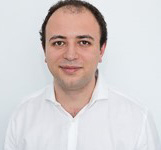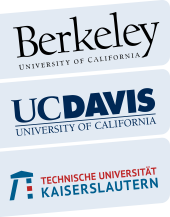

RESEARCH PROGRAM
Title: Molecular Dynamics Modeling of Machining Processes of Composite Materials
Name: M.Sc. Vardanyan Vardan
E-Mail: vardanya@rhrk.uni-kl.de
Phone: 0631 205 4287
Project description:
Starting situation
An understanding of the physical mechanisms behind machining processes such as cutting or grinding is basic for any modeling of manufacturing systems. While these processes usually operate on 0.1 mm- or larger scales, recent progress in manufacturing tools now allows one to process materials on length scale down to ~10 μm. Molecular dynamics simulation of machining processes has been shown to be useful in order to obtain insight into process dynamics and detailed structure of the final state. However, on today’s computers only small (nanometric) scales can be simulated; here scale-bridging approaches and multi-scale modeling scenarios, such as they are realized in the present IRTG, become relevant.
Approach
The MD simulations are performed using the open-source LAMMPS code [1] . In order to identify the lattice dislocations and to determine their Burgers vectors, the dislocation extraction algorithm (DXA) is used[2]. It is based on the common-neighbor analysis method to identify the local crystallographic structure in the neighborhood of each atom. Dislocation cores are identified by performing Burgers circuits and shrinking them as far as possible. The positions of the dislocation cores are used to construct the one-dimensional dislocation lines. This allows both to calculate the number of dislocations and to measure the length of dislocation lines.
Expected Results
In this project we extend existing simulations to composite materials and to the processes of cutting and grinding. Quantitative results on the hardness, the friction coefficient, the generation of heat and defects in the material, on the ejected material, and on the wear of the diamond machining tool will be obtained. Of special interest is the interface between matrix and particle, since its crystallographic orientation and bonding characteristics will strongly influence the response to applied forces during the machining process.
[1] S. Plimpton, J. Comput. Phys. 117 (1995) 1 http://lammps.sandia.gov/
[2] Stukowski, A.; Bulatov, V.V.; Arsenlis, A. Automated identification and indexing of dislocations in crystal interfaces. Model. Simul. Mater. Sci. Eng., 2012, 20, 085007

